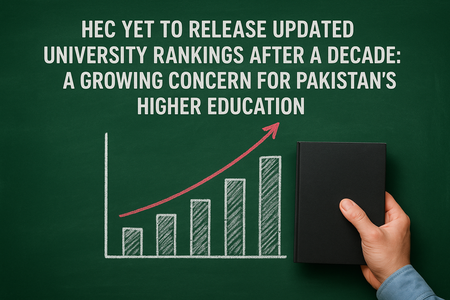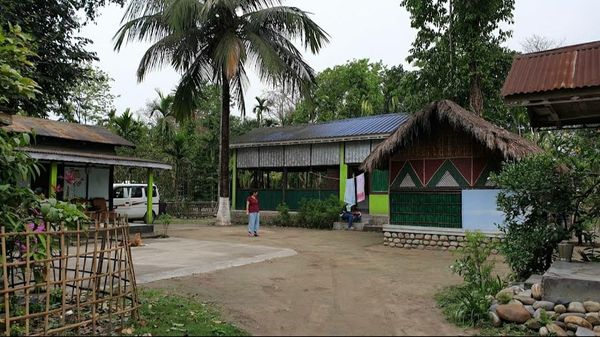Best Universities in Pakistan According to HEC: Understanding the Ranking Criteria
 Pakistan Technews
26 Sep, 2025
13 mins read
6
Pakistan Technews
26 Sep, 2025
13 mins read
6

University rankings are an essential tool for assessing the performance of higher education institutions. In Pakistan, the Higher Education Commission (HEC) is the body responsible for evaluating universities and ensuring they meet national standards. Over the years, HEC has developed frameworks for measuring the strengths and weaknesses of universities, but delays in releasing updated rankings have made the process less consistent. Still, the focus on identifying the best universities in Pakistan (HEC) and defining clear ranking criteria remains crucial for students, educators, and policymakers.
This article explores how HEC evaluates universities, why ranking criteria are important, and what factors contribute to defining the “best†universities in the country.
Why Rankings Matter in Higher Education
Guidance for Students and Families
For students and parents, choosing a university is one of the most significant decisions in life. Rankings provide a structured way to compare institutions on the basis of quality education, faculty expertise, research opportunities, and graduate employability.
Benchmarking for Universities
For institutions, rankings serve as benchmarks. They encourage universities to improve their performance and compete nationally and internationally. Institutions often set internal goals that align with ranking indicators such as research publications, faculty qualifications, and student facilities.
Policy and Development Planning
Policymakers also rely on rankings to distribute funds, introduce reforms, and strengthen weaker institutions. Without a clear ranking system, decision-making becomes difficult, as it lacks objective evidence.
HEC’s Role in Ranking Universities
The Higher Education Commission was established to regulate and promote higher education in Pakistan. One of its responsibilities is to ensure that universities are assessed through transparent methods. Over the years, HEC has released rankings to highlight the best universities in Pakistan, based on measurable performance indicators.
However, while global rankings like QS and Times Higher Education use their own methodologies, HEC rankings are tailored to Pakistan’s context. They consider local challenges, research capacity, and resources, making them more relevant for domestic decision-making.
Pakistani Universities Ranking Criteria: What Does HEC Measure?
When evaluating universities, HEC considers multiple dimensions of performance. These are some of the core ranking criteria:
1. Quality of Faculty
Faculty quality is one of the most significant factors. HEC measures:
- Number of PhD-qualified teachers.
- Teacher-student ratios.
- Faculty training and development programs.
- Universities with stronger faculty profiles tend to perform better in the rankings.
2. Research Output
Research is a central pillar of modern higher education. HEC evaluates:
- Published research papers in recognized journals.
- Citations and impact factor of publications.
- Research projects funded nationally and internationally.
- Contribution to solving real-world problems through research.
3. Infrastructure and Learning Resources
A university’s physical and technological resources matter greatly. This includes:
- Libraries and access to digital learning resources.
- Laboratories and research facilities.
- IT infrastructure and e-learning platforms.
4. Quality Assurance Systems
HEC emphasizes internal quality mechanisms. Universities are expected to have quality assurance cells that monitor teaching standards, examination procedures, and curriculum development.
5. Student Support and Graduate Employability
Rankings also assess whether universities provide adequate support to students through:
- Career counseling and job placement services.
- Internship opportunities.
- Alumni success in national and international job markets.
6. Community Development and Outreach
HEC considers how universities contribute to society through community service projects, partnerships, and innovation hubs. This reflects the broader role of universities in national development.
Challenges in Applying Ranking Criteria
While HEC has defined a structured methodology, applying it consistently across all institutions faces challenges:
- Data Gaps: Some universities fail to provide accurate or timely information, leading to incomplete assessments.
- Standardization Issues: Not all universities follow the same reporting methods, which creates difficulties in comparison.
- Resource Differences: Public and private universities vary in funding and facilities, which affects their performance under the same criteria.
- Delays in Publication: As seen in the past decade, rankings have not been regularly updated, which weakens their credibility.
The Best Universities in Pakistan: What Makes Them Stand Out?
Though official rankings may be delayed, certain universities in Pakistan have consistently been recognized for their excellence. The best universities in Pakistan, according to HEC’s criteria, typically demonstrate:
- Strong Research Profiles: Institutions with high numbers of publications and impactful research gain recognition.
- Qualified Faculty: Universities that invest in hiring PhDs and training staff achieve better outcomes.
- Comprehensive Student Facilities: From modern labs to well-stocked libraries, facilities enhance the learning environment.
- Industry Collaboration: Partnerships with industries and research centers help graduates transition smoothly into the job market.
Examples include major public-sector institutions like Quaid-i-Azam University, University of the Punjab, and National University of Sciences and Technology (NUST), which are often highlighted in both national and international evaluations.
Comparison with Global Ranking Systems
While HEC uses localized criteria, it is useful to compare them with international systems such as QS or THE rankings. Global systems place heavy emphasis on international faculty, international student ratios, and global reputation surveys. In contrast, HEC focuses more on local impact, graduate employability in Pakistan, and alignment with national needs.
This difference shows why some Pakistani universities may perform well domestically but not rank highly internationally. Bridging this gap requires aligning national criteria with global benchmarks without losing local relevance.
Moving Toward Better Rankings
For Pakistan’s higher education system to grow, HEC needs to publish rankings more regularly and improve transparency in criteria. Suggested steps include:
- Publishing detailed methodologies to build trust among stakeholders.
- Using technology to collect standardized data from universities.
- Releasing rankings at fixed intervals (every two or three years).
- Incorporating feedback from students and alumni into the evaluation process.
By adopting these measures, HEC can ensure that its rankings remain relevant, credible, and useful for all stakeholders.
Conclusion
The best universities in Pakistan (HEC) are identified through a structured set of ranking criteria that emphasize faculty quality, research output, student support, and community contributions. While HEC has established these benchmarks, the irregular release of updated rankings has limited their impact. Moving forward, consistent updates and greater transparency will be vital to strengthening higher education in Pakistan.
As seen in reports and discussions on platforms such as Pakistan Tech News, the question of ranking delays highlights the need for urgent reforms. Articles such as the HEC delay in updated university rankings underline why updated and reliable criteria are essential for Pakistan’s academic future. Ultimately, credible rankings not only guide students but also push universities toward higher standards, ensuring the country keeps pace with global educational developments.
Written By:
Pakistan Technews



Hotels at your convenience
Now choose your stay according to your preference. From finding a place for your dream destination or a mere weekend getaway to business accommodations or brief stay, we have got you covered. Explore hotels as per your mood.





